Bath Shower Screens vs Shower Curtains

If you’re renovating a bathroom with a shower bath, you may find yourself stuck making the decision between a shower curtain or a glass screen. This question may also exist if you are wanting to create a walk-in shower or wetroom space that is not fully enclosed like a shower enclosure and deciding between what is best to act as a protective divider from the rest of the room, or even simply just for privacy.
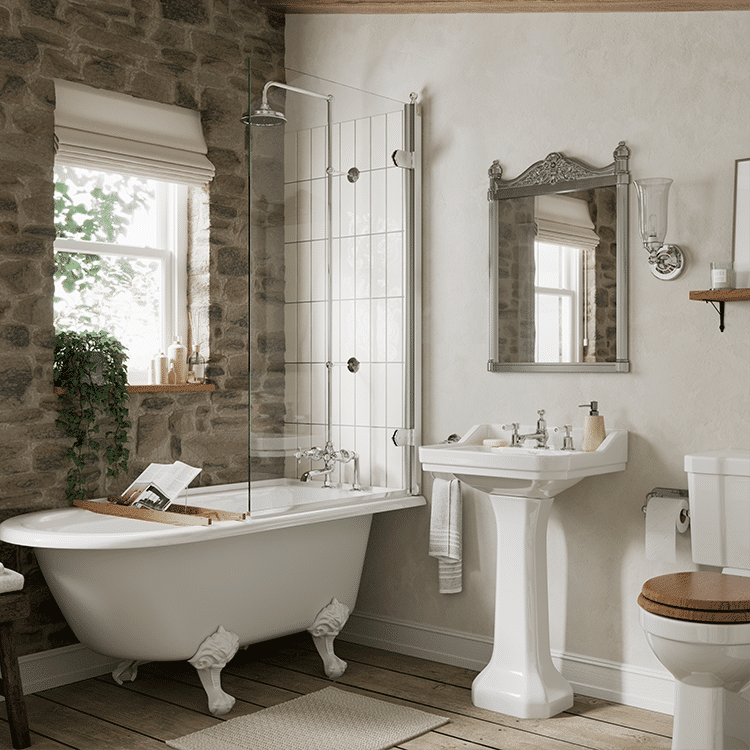
You’ll also know that this is no trivial decision: not only are there aesthetic considerations, but functional ones as well. Shower screens are better at protecting against splashes, but need more cleaning. Shower curtains can be fiddly, but you get an almost unlimited choice of cool designs.
In this post, we’ll help you to make the decision once and for all by exploring the pros and cons of both. Here's what we'll cover:
- Shower screens and shower curtains: what’s the difference?
- Shower screens: the pros and cons
- Shower curtains: the pros and cons
Shower Screens and Shower Curtains: What’s the Difference?
Just so we’re all on the same page, let’s quickly introduce the things we’re talking about in this blog post:
- A walk-in or wetroom shower screen is a large piece of standalone glass or one that is also joined by a separate hinged panel to act as a protective barrier. This can be installed using bracing bars from a wall or ceiling either to create an enclosed space, in a recess, or a complete walk-through shower area
- An over bath shower screen (a name that gets swapped around to shower bath screen depending on who you speak to) is one that goes along the side of a bathtub to enclose the space when you’re showering in a bathtub
- A shower curtain is a piece of fabric with a row of holes along the top, via which it is suspended from a railing fitted above the bath. When pulled closed, the shower curtain also encloses the space while you’re showering.
Types of Shower Screen
While many wetroom shower screens look the same from a glass perspective, they do come in different colours and in framed or frameless designs. Bath Shower Screens, meanwhile, offer a lot more variation. This starts from plain rectangles of glass that can be fixed to a wall on the bath with no movement, all the way to ones that can move via a simple hinge. This includes standard and pivot hinged shower screens, and these can be hinged either at the wall fixing so they can be opened and closed or moved, usually between between 90 degrees and 120 degrees in total. Alternatively, they can be hinged between two separate screens with a wall-fixed one, and a second one that moves in or out. Hinged screens are often more popular for families and households because of the accessibility and for cleaning.
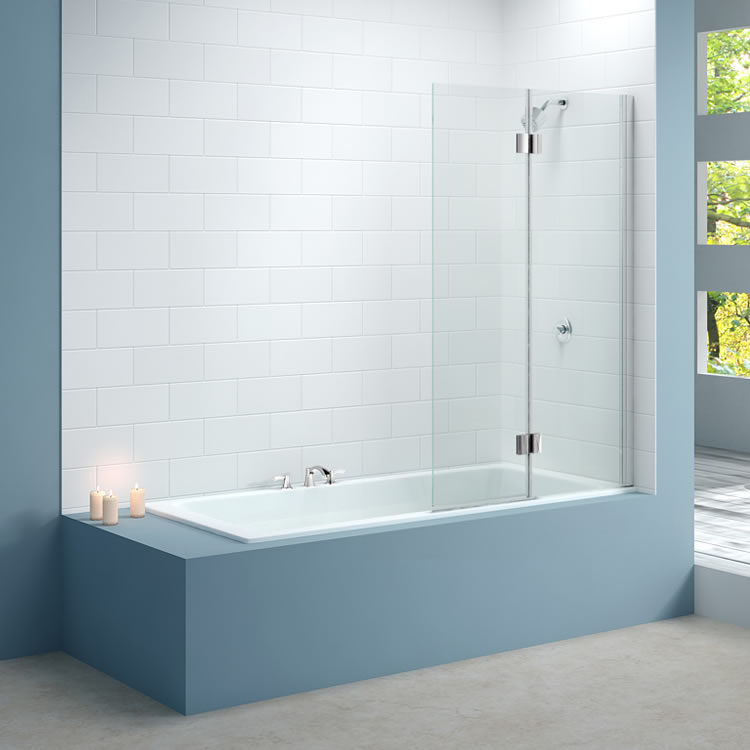
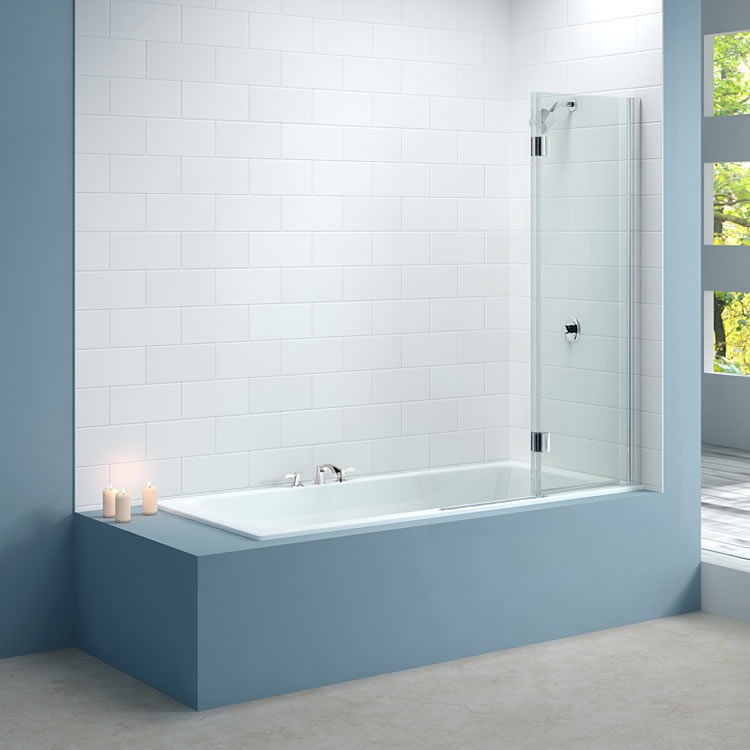
Away from hinged, there are also folding bath shower screens or concertina shower screens, which are made up of two or more separate panels, that all fold in on each other and can be pulled back to the wall. This again makes it easier for access, and is ideal for busy family households.
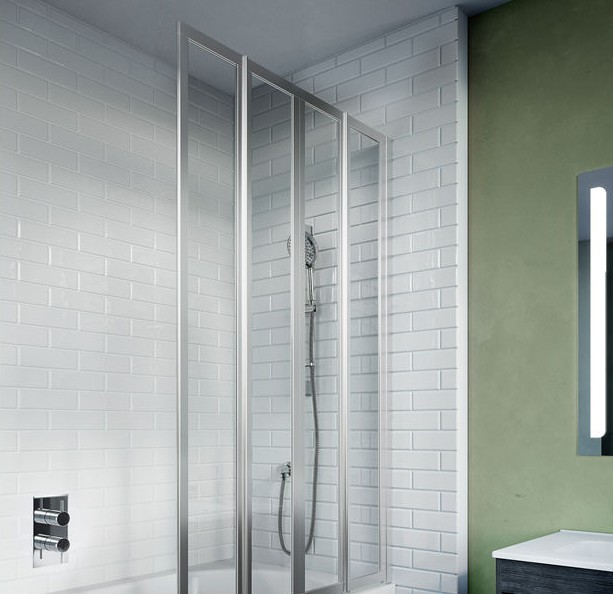
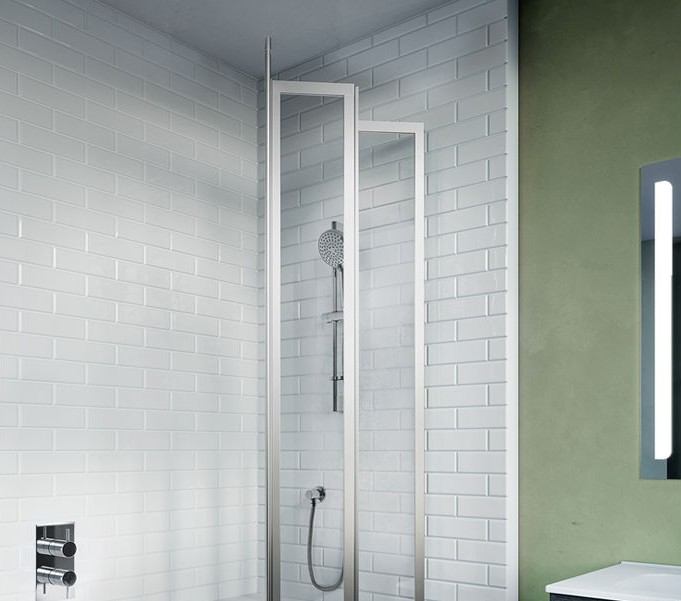
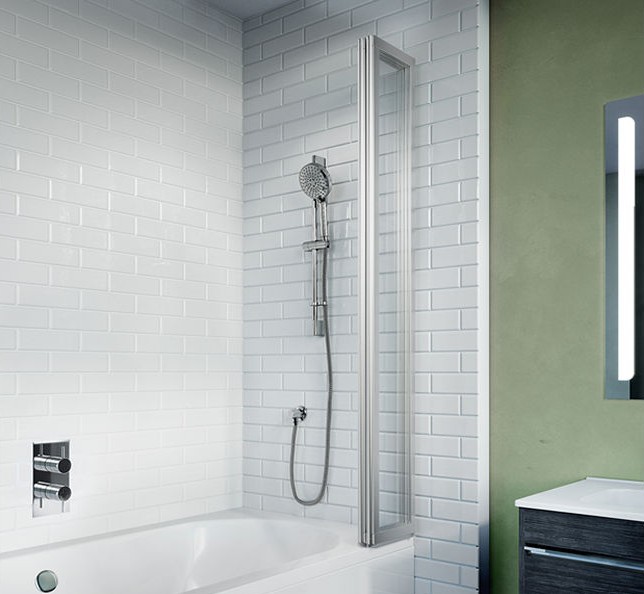
If rectangular is a bit simple for the liking, than there are a select few curved shower screens that feature what is called a radius edge. These feature a panel that arcs at the top for more gentler, subdued lines. A final point to note on shower screens is that they can vary is glass thickness ranging between 6mm and 10mm. To understand the pros and cons of different thicknesses, read our guide to shower glass thickness.
It is worth noting at this point that not all over-bath shower screens are universal, and not all baths can take a shower screen, as they require a certain size edge to sit on. Some baths are also designed to only use same-brand screens, so it is worth always checking when looking at types of shower screen or checking in advance with the bath manufacturer.
Types of Shower Curtain
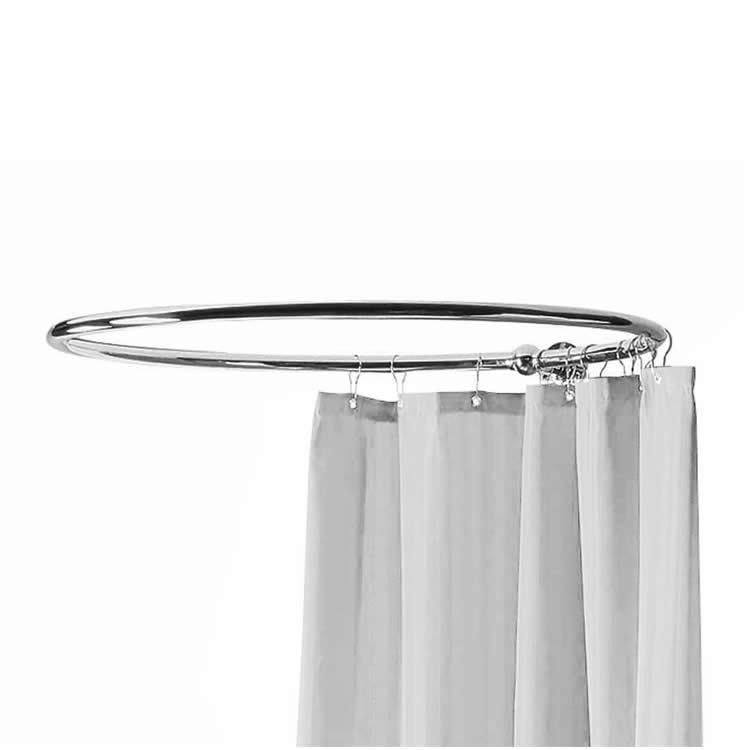
You have options with shower curtains, too. There is plenty of choice in terms of colour, style and material, as well as how the shower curtain is fitted - a bit like every day curtains around the home. This ties in with the choice of shower curtain rail or ring that you use to hang your shower curtain. As well as the default straight rail that follows the edge of the bath, there are also curved or arcing ones ranging from subtle bends to horse-shoe shape rails. These can create enclosed areas using the curtain, much like shower rings that are complete looped rails. These can come in designs from a small circular loop to a much more elongated capsule shape, which follows the entire curvature of a bathtub.
Screens or Curtains for Shower Baths
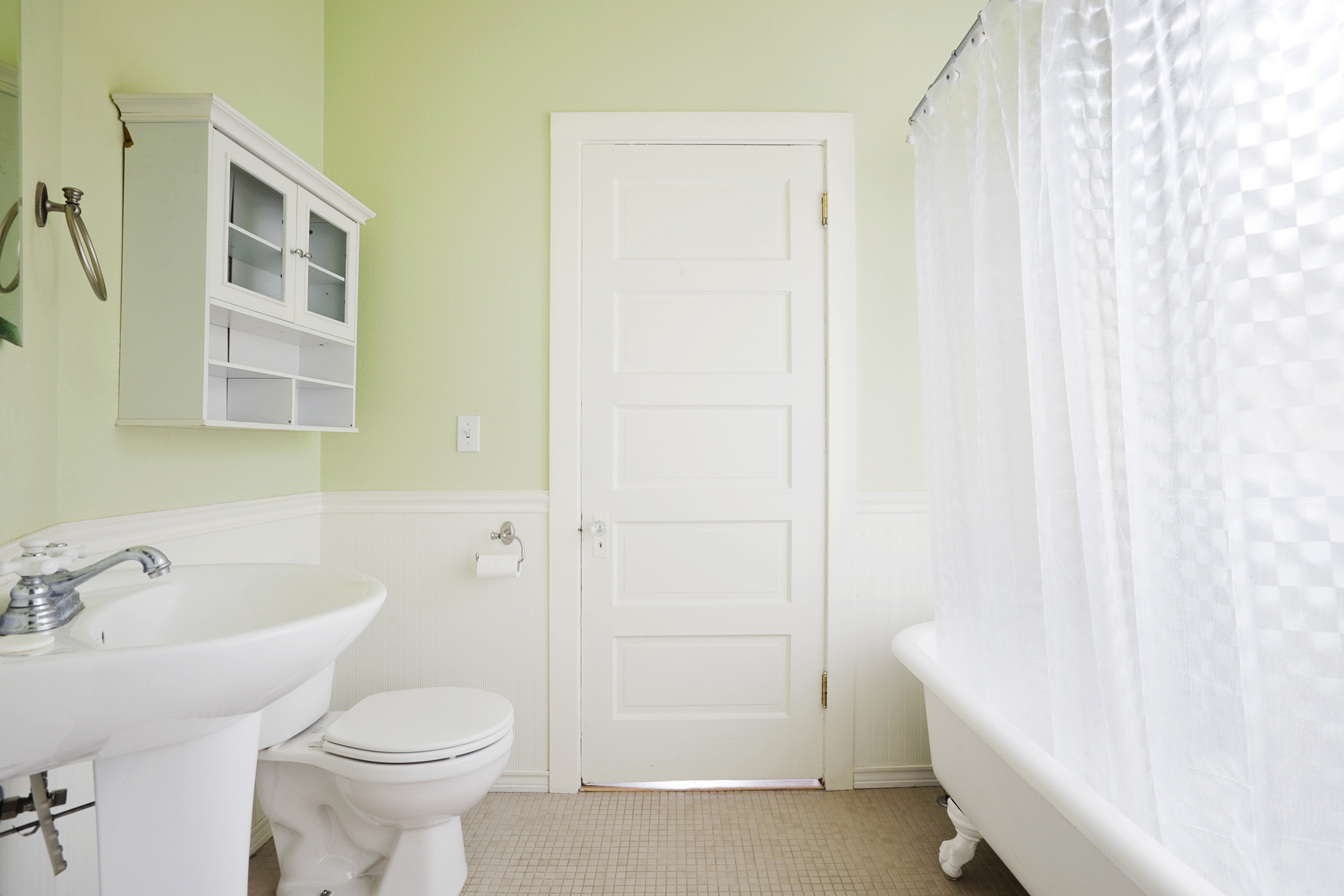
In the main, a lot of people comparing shower screens and curtains will be looking to do so for shower baths. The pros and cons we discuss are with reference to these two products, and in this particular area, so the same may not apply for wetrooms, walk-in showers or enclosures.
Nevertheless, if you’ve got, or are planning to get one of these types of showers, whether it be a walk-in shower or a wet room, it’s still worth getting to know the pros and cons of shower screens. Familiarising yourself with this information before renovating your bathroom may help sway your decision on which type of shower to go for.
Shower Screens: the Pros and Cons
Discussion around shower screens and shower curtains is surprisingly heated! We have reviewed and compiled a list of the most common pros and cons mentioned by people to create an extensive list for each type and hopefully these will provide some insight and help in making a great decision for your home.
Shower Screen Pros
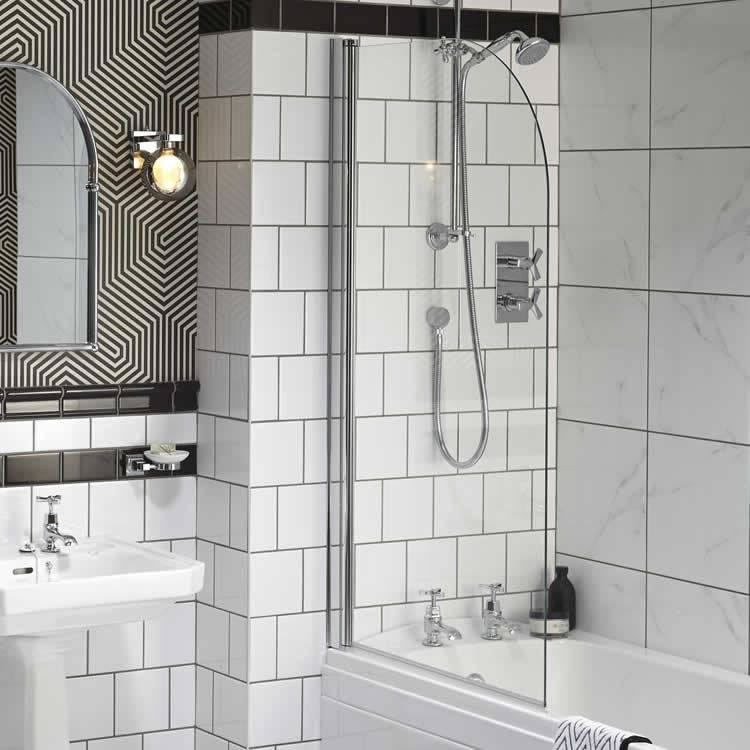
- Minimal chance of leaking: Shower screens are lined with specially designed material to keep a tight seal between the screen and the side of the bath. This means that as long as the shower screen is in place, there’s very little chance of any water leaking underneath it.
- They come in lots of shapes: You can find a shower screen to fit pretty much any bathtub, whether it’s a standard square bath, or a variation like a P bath, L bath, or even a roll top bath. So if you feel hesitant about upgrading your bath because you’re concerned you won’t be able to get the right shaped screen, don’t be!
- There are different ways to open them: A common complaint with shower screens is that they take up too much space when opened, but with folding screens this problem is easily avoided. Rather than swinging out from one hinge, folding screens collapse in on themselves when not in use and tuck neatly up against the wall.
- Lots of design choices, too: From plain glass screens to attractive Crittall shower screens, it’s easy to find something that goes with your bathroom aesthetic.
- Frosted glass for privacy: If you like the privacy of an opaque shower curtain but would prefer a screen, you can go for frosted glass. This is a great way to make your shower feel private and secure, while still hitting your preferred design brief.
- No billowing! Have you ever found yourself settling into a nice warm shower, only for a cold shower curtain to stick itself to your leg and break the ambience completely? There’s zero chance of this happening with a shower screen.
- They will last years: Shower screens and their seals are built to last a long time, meaning that once you install one you won’t have to worry about replacing it any time soon.
Shower Screen Cons
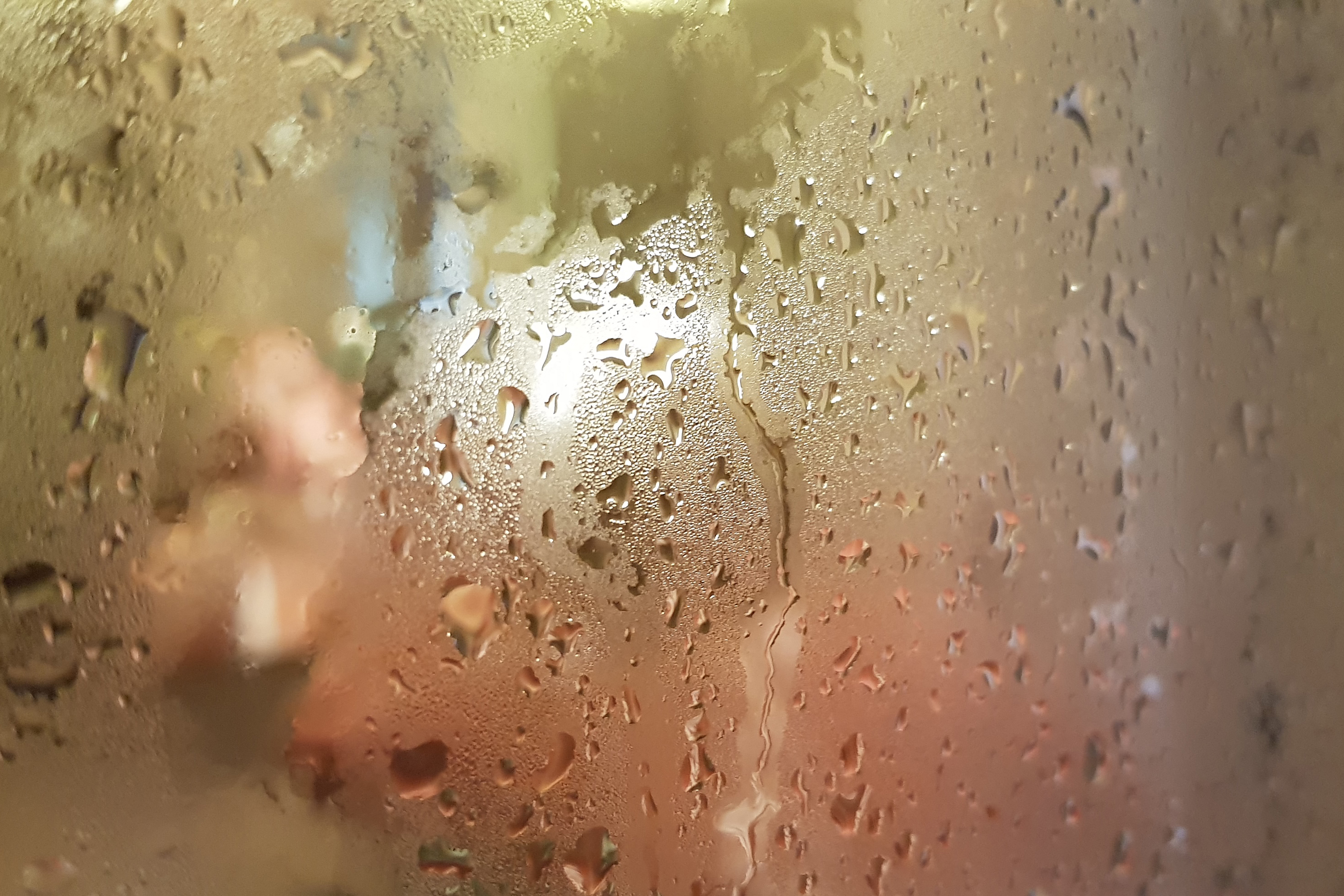
- Size can be limiting: Depending where a shower is positioned above a bath, it may be the case that a screen isn’t quite big enough to protect the floor from all splashing. If floor space is tight next to your bath (for example, if your toilet is close to one end of the bath) it can be tricky to catch this splashed water with a bath mat, meaning you might find yourself with a wet floor.
- Can get in the way of bath time: If you’re bathing a young child or a pet, the shower screen can quickly get in the way. Especially if the open screen prevents the bathroom door from opening fully.
- They get streaky: Unless you dry your screen after each use, you’ll start to notice streaks building up fairly quickly. This isn’t particularly difficult to clean, but if you’re particularly house proud you may find it playing on your mind!
- Limescale: Leave the streaks for too long and you may find they become quite hard to shift. This is because of limescale build up, and it’s definitely a reason to clean regularly!
- Breakable: While it’s unlikely thanks to the type of glass used, shower screens can crack or smash! And if one smashes while you’re not wearing anything on your feet, avoiding the broken glass can be very difficult.
- May not be suitable for younger users: Due to their breakable nature, you may want to think twice before putting a glass screen on a shower bath that gets frequent use from young users!
Shower Curtains: the Pros and Cons
And now let’s take a look at the other side of the debate.
Shower Curtain Pros
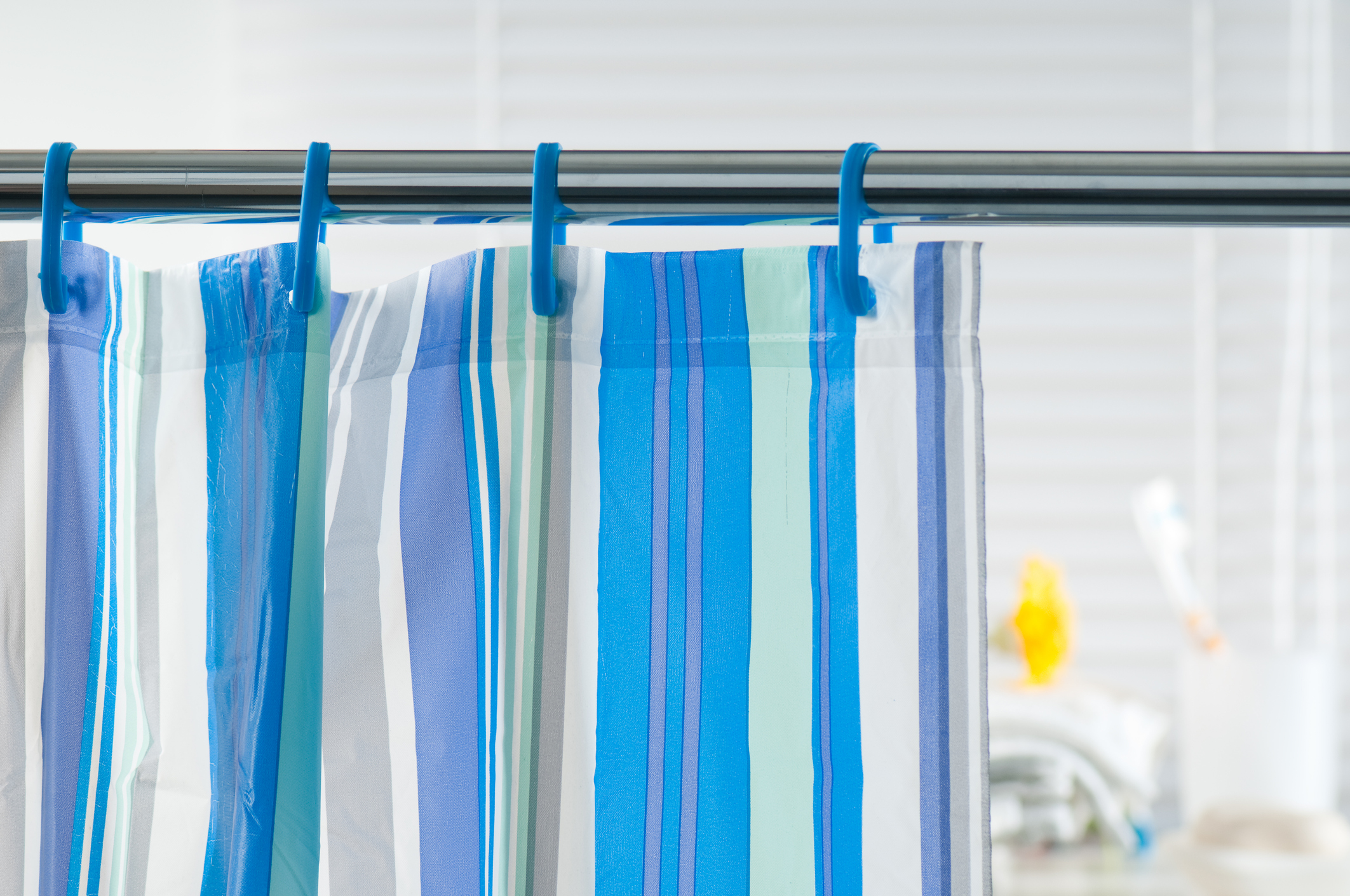
- Flexible length: While shower screens are a fixed size, you can open or close a shower curtain to the required length. This means you could cover up a larger section of the side of the bath to protect against splashes that a screen might not quite catch.
- You can use two curtains to make things easier: A lot of people have one waterproof shower curtain that sits inside the bath to catch all runoff water, and another that drapes over the side of the bath. This outer curtain doesn’t necessarily need to be waterproof, and it’s easier to align it with the overall aesthetic of the room.
- So many designs to choose from: Whether you go for a standard curtain in a plain colour, something a little more interesting like stripes, or a completely zany design like the Moby Dick design below (our personal favourite), it’s much easier to make a design statement with a shower curtain than it is with a screen.
- Cheap to replace: Damaged your curtain? Or decided you don’t like the design you chose a few years back? Thankfully replacement shower curtains are low cost compared to screens.
- Easy to clean: If you use the two curtain trick you can take the inner curtain off and chuck it in the laundry to keep it clean. On the right cycle there’s no risk of damaging the curtain or its waterproofing.
- They can cover up what’s in the bath: If you store all your soaps and shampoos around the bath, keeping the curtain closed is a great way to block these from view. A subtle way to retain the aesthetic of the room and prevent it from becoming visually cluttered with bottles and similar.
Shower Curtain Cons
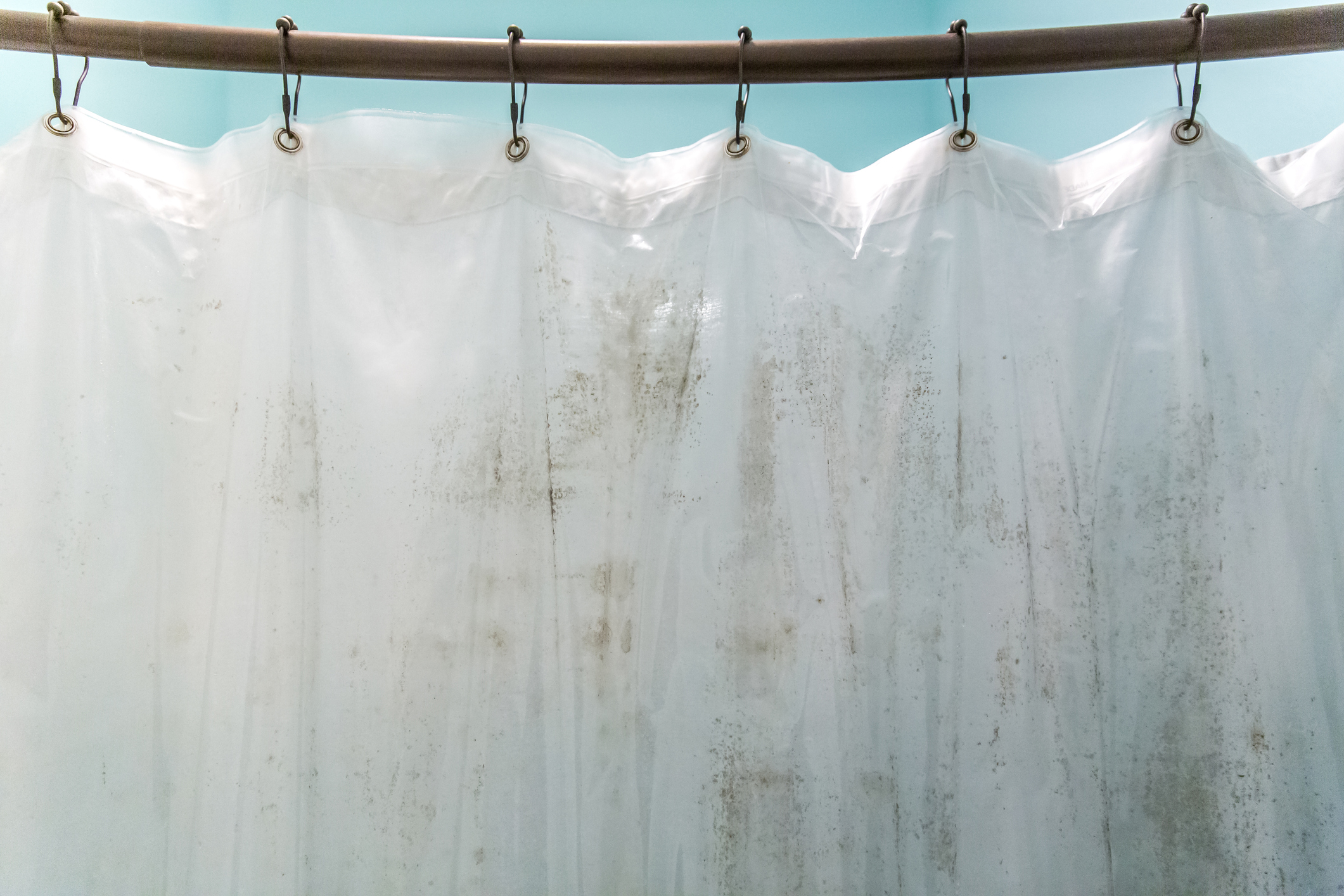
- Can go mouldy: If not dried or cleaned often enough, damp shower curtains can start to go mouldy. While they still work in this state, they start to become unsightly and carry the risk of mould spreading elsewhere in your bathroom.
- Prone to leaking if not used correctly: Have you ever showered then stepped out onto a completely saturated bathroom floor? If you accidentally drape the curtain over the wrong side of the bath, you may not notice until it’s too late and the room is flooded (although refer back to the two curtain trick in the Pros section to avoid this).
- Prone to billowing: Because of the flexible material, curtains are susceptible to move with the airflow in the shower. As the air warms up and rises, the curtain can sometimes be pulled inwards into the shower space and, depending where you’re standing, into contact with your skin. Not particularly pleasant if you’re warm and the curtain is cold!
Making the Right Choice for Your Shower
Getting your shower just right is an important process. Whether you go there to invigorate yourself at the start of the day, or to relax and unwind at the end of it, creating a space you enjoy being in will pay dividends for years to come. And while deciding between a screen or a curtain may not seem like the biggest deal, it contributes to the overall atmosphere of your shower experience.
If you need a hand with this decision or with any other aspect of your bathroom plans, take a look at our 3D Bathroom Design Service. With an appointment, our team can show you the options available to make your bathroom perfect.